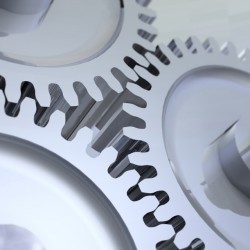Blog
Version 3.1.1
This release of dyn4j was focused on performance and the API. Many API changes, both breaking and non-breaking, have been made. See the Release Notes for more details. Many new small features have been made as well.
Posted on July 21, 2012
Algorithmic and Architectural Gaming Design: Implementation and Development
Algorithmic and Architectural Gaming Design: Implementation and Development covers a myriad of game development topics. But what sets this book apart, in my opinion, is the focus on actual implementation.
Posted on June 04, 2012
Version 3.1.0
The latest release of dyn4j adds a number of new features. See the the release notes. It also contains a number of important bug fixes. On the other hand, the API has been changed slightly and may break code written against older versions.
Posted on May 05, 2012
Version 3.0.3
Version 3.0.3 is a maintenance release with very few changes. The primary change was the move of the Settings class from being a singleton to being a member of the World class. This allows each instance of the World class to have different settings. The changes may break compatibility with previous versions, although they should be minimal.
Posted on March 03, 2012
dyn4j Project Setup Video
I finally got some time to create my first How-To video for the dyn4j project. The first video describes how to setup a Java project in Eclipse to use dyn4j. It’s short and hopefully to the point.
Posted on December 29, 2011
Version 3.0.2
3.0.2 introduces significant changes in the Sandbox application along with some minor bug fixes to dyn4j and some new features. Specifically, small CCD improvements, a new fixture filter TypeFilter, and tangent speed settings on contacts. Bug fixes include: a fix to the Body.setMass(Mass.Type) method, auto-sleeping bug, and a rotation disc computation bug. In addition, both dyn4j and Sandbox have been internationalized (any volunteers for translating?).
Posted on December 20, 2011
Contact Points Using Clipping
Many have asked “How do I get the contact points from GJK?” or similar on the SAT, GJK, and EPA posts. I’ve finally got around to creating a post on this topic. Contact point generation is a vital piece of many applications and is usually the next step after collision detection. Generating good contact points is crucial to predictable and life-like iteractions between bodies. In this post I plan to cover a clipping method that is used in Box2d and dyn4j. This is not the only method available and I plan to comment about the other methods near the end of the post.
Posted on November 17, 2011
Version 3.0.1
3.0.1 incorporates many small changes. JUnit test, the TestBed and a new testing/demo application, Sandbox, have been moved around to better structure the project. Many major and minor bug fixes have been made. The most visible change is the normalization of the Joint class methods. In addition, the WeldJoint class now supports a soft joint setting.
Posted on October 03, 2011
Version 3.0.0
3.0.0 incorporates big changes to the library. The base package has been changed, the broadphase collision detection code has been updated adding 3 new implementations, many bug fixes and performance enhancements, a new joint, better documentation, many more JUnit tests, new example applications, and more.
Posted on June 05, 2011
How A Differential Gear Works
Had a friend of mine send me a link to this video on YouTube from the 1930’s explaining how a differential works. This video does a great job of explaining the concept and possibly the thought process that was used to develop it.
Posted on March 29, 2011
Tags
Bible
Collision Detection
Constrained Dynamics
Contacts
EPA
Equality Constraints
GJK
Game Development
Java
One God
OpenGL
Physics
SAT
dyn4j
Categories
- 23 Blog
- 8 Collision Detection
- 19 Game Development
- 46 News
- 39 Release
- 10 Constrained Dynamics
- 11 Physics
- 1 Bible
Recent Posts
Posts by Year
2024
2022
2021
- Simple Polygon Simplification
- A Faster Broadphase in dyn4j 4.0.0
- WordPress to GitHub Pages
- dyn4j.org Moved to GitHub Pages
- Version 4.1.0
2020
2018
2017
2016
2015
2014
2013
2012
- Version 3.1.2
- Version 3.1.1
- Algorithmic and Architectural Gaming Design: Implementation and Development
- Version 3.1.0
- Version 3.0.3
2011
- dyn4j Project Setup Video
- Version 3.0.2
- Contact Points Using Clipping
- Version 3.0.1
- Version 3.0.0
- How A Differential Gear Works
- Prismatic Constraint
- The dyn4j TestBed Now Uses JOGL
- Version 2.2.3
- Version 2.2.2
2010
- Angle Constraint
- Line Constraint
- Pulley Constraint
- Weld Constraint
- Version 2.2.1
- Max Distance Constraint
- Version 2.2.0
- Version 2.1.0
- Distance Constraint
- A Few Services Ago
- Version 2.0.0
- Version 1.1.0
- Equality Constraints
- Documentation Update
- Point-to-Point Constraint
- dyn4j Is Released!
- Version 0.7.2
- EPA (Expanding Polytope Algorithm)
- GJK, Distance, Closest Points
- GJK (Gilbert–Johnson–Keerthi)
- SAT (Separating Axis Theorem)
